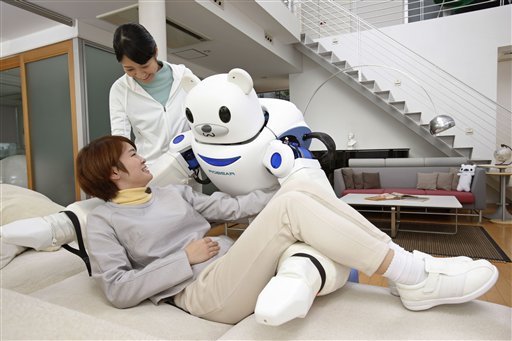The National Science Foundation is spending nearly $1 million to create robotic nurses that can lift patients and deliver medicine with the hope to increase the "social acceptance" of robots.
The University of Texas is conducting the study, which will build two versions of robots, promising that the robots would keep the human nurses "in the decision loop."
"There are nearly 3 million registered nurses employed in the United States, making them the largest pool of healthcare providers in the country," a grant for the project states. "Technology that affects the performance of this large labor pool cannot fail to have impact. Due to advancements in robotics and computer technology, access to intelligent communication, sensing, and computing hardware is on the cusp of becoming common--not only for healthcare professionals, but also for patients themselves."
The project will create "adaptive robotic nursing assistants," which will be designed to help nurses in hospitals. The robots will provide "lift assistance, delivery of everyday lightweight objects (medicine, medical wearable equipment), and some physical assistance with movement of heavier objects, such as furniture, gurneys, and the patients themselves."
"The proposed Adaptive Robotic Nurse Assistants will navigate cluttered hospitals, while equipped with multi-modal skin sensors that can anticipate nurse intent, automate mundane low-level tasks, but keep nurses in the decision loop," the grant said.
The researchers will create a "sitter robot" designed to take vital signs and observe patients, as well as a "walker robot" that could help patients walk and move medical equipment.
The university has received $999,946 for the project. Research is estimated to continue until July 2018.
Dan Popa, an associate professor of electrical engineering at the University of Texas at Arlington, is leading the project. Popa previously received more than $1.3 million from the National Science Foundation to attempt to give robots sensitive, human-like skin.
"We really believe this technology will make an impact and the application of robots in everybody’s lives in the future," Popa said after being awarded the grant in 2012. "And I really think a few years down the road you will be going to the store, buying your favorite robot, and it will be in part thanks to the technology we’re developing today."
Popa describes robots that would look similar to humans that would wear clothes.
"Co-robots of the future will share their living spaces with humans, and, like people, will wear sensor skins and clothing that must be interconnected, fitted, cleaned, repaired, and replaced," according to Popa’s website. "In addition to aesthetic purposes that increase societal acceptance, these sensorized garments will also enhance robot perception of the environment, and enable extraordinary levels of safety, cooperation, and therapy for humans."
Other research at Popa’s Next Gen Systems lab include a robot waiter, which shown in a video cannot push a cart without the help of a human, and a robot that can very slowly flip a pancake.
His research has also used the ZENO robot designed by Robokind, which was also used for a National Science Foundation project that is using robots for children to talk to about bullying.
The project to create robot nurses also has the goal to increase the "social acceptance" of robots.
"The improved understanding of human-robot and nurse-robot interaction could represent enabling technology that will facilitate research breakthroughs and increase productivity and social acceptance of robotics," the grant said.
Update 5:55 p.m.: A previous version of this article said the ZENO robot was designed by Hanson Robots. It is designed by Robokind, which spun out of Hanson Robotics in February 2011.
